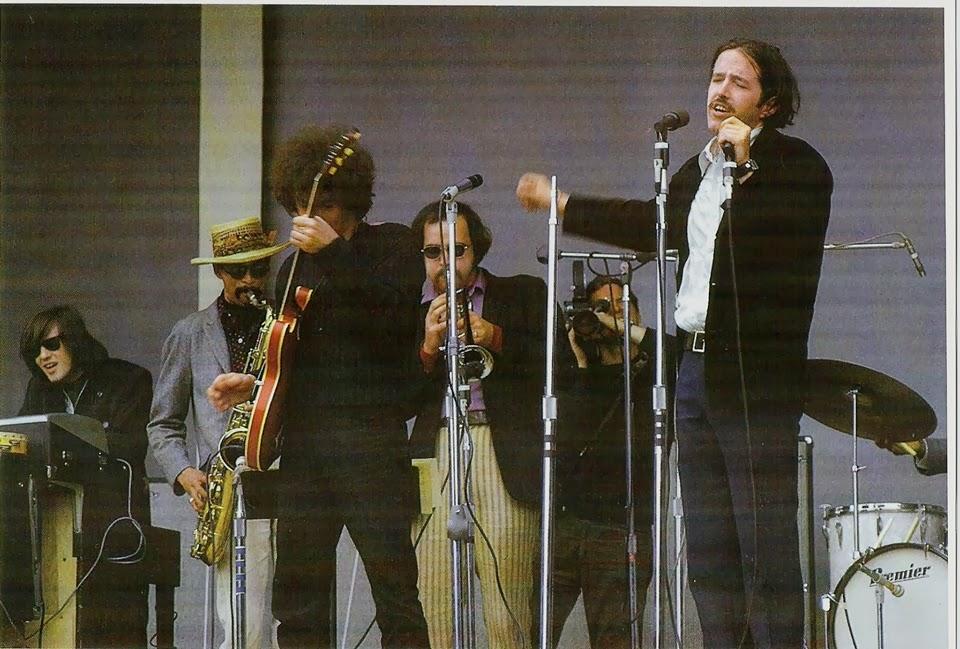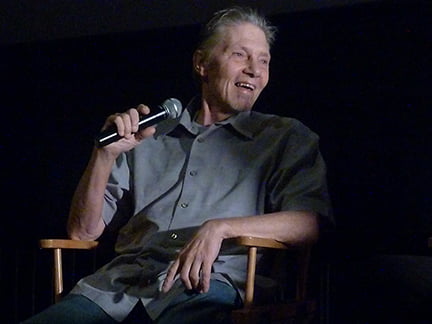17.12. – Happy Birthday !!! Many of my generation have told me how once they heard the Butterfield Blues Band; things were never the same inside their heads. At the height of his popularity Butterfield and his musicians ignited an interest in a musical genre that had been buried in a racial enclave of American culture.
There are all cultural pivot points which arrested public attention and forever changed our musical sensibilities; all used the styles of African American musicians as a foundation for their own music and, in the bargain, introduced the world to some of America’s greatest artists, who had remained invisible. Yet Butterfield, the musical pioneer, has been all but completely forgotten. History can be worse than unfair.
The Butterfield Blues Band was exceptional in many ways but none so much as the fact that it was the first integrated blues band. The white members of the band came from middle class families. Had they not fallen in love with this music they probably would have become professionals like their fathers. Instead, they gave themselves to the power of a music that had been hidden away in a part of America where few whites ever ventured. The black members of the band had known little else besides a life of ghetto bars and rural roadhouses, places where you could get shot just for standing in the wrong spot at the wrong time.
Paul Butterfield grew up in Chicago. In high school he played classical flute and starred on the track team. Through the influence of an older brother and with the urging of a chum, Nick Gravenites, Butterfield set out to find the music he had heard on the black radio stations in Chicago. This music could be heard live only on the South and West Sides in bars where the only white faces belonged to policemen. Somehow Butterfield and Gravenites made that musical culture their own. They learned all its varieties, from the hard-edged slide guitar of Elmore James to the smooth big band sound of Bobby Blue Bland. One particular blues musician captured Butterfield’s imagination, Marion Walter Jacobs, known as “Little Walter”. Little Walter created a new blues instrument, the amplified harmonica. A cheap instrument, invented in Germany in the 19th century, the harmonica was designed, not mainly for playing melody, but, rather, to play chords. Harmonica was not new to blues music, but its voice in the hands of Little Walter, blowing it through a cheap microphone plugged into a guitar amplifier, was brand new. The sound of vibrating brass reeds, moving a column of air that reached down into a man’s innards, driving a crystal microphone in the confines of a small, air- tight accoustic space, this sound was a new voice, raw and primal, and Butterfield took it for his own. More precisely, he stated, “the instrument chose me”. He sang, too, with a strong, chesty tone and a delivery full of authority.
Elvin Bishop was the original guitarist in the Butterfield Band. Bishop came to Chicago from Tulsa, Oklahoma, to study physics at the University of Chicago on a Merit Scholarship. He left his studies to play the blues with Butterfield.
When they got a steady gig at Big John’s club, Bishop and Butterfield persuaded the rhythm section of Howlin’ Wolf’s band to join them. Sam Lay played drums with weight-lifters’ arms and a relentless, staccatto rhythm, coupled with a powerful right foot on bass drum. Though one would never suspect it to look at him, his health was fragile, perhaps aggravated by a bullet wound he had suffered some years before. Illness caused him to leave the band before the sessions for the second album.
The other half of the rhythm section was Jerome Arnold, younger brother of a blues singer/harmonica-player of wide repute, Billy Boy Arnold. As the harmonic half of the rhythm section he played the bass like a bricklayer lays bricks, in heavy, solid lines. Together Lay, Arnold and Bishop provided an unshakable, rhythmic and harmonic foundation for the Butterfield’s brilliant solos.
By 1964 Elektra Records producer Paul Rothchild heard Butterfield and recognized the potential. He wanted to record the band, but he wanted Butterfield to add another guitarist, Mike Bloomfield. Bishop, the regular guitarist, had met Bloomfield before on one of his outings to neighborhood pawn shops in search of a guitar. As the foil to Butterfield’s harp playing he became the leader of a generation of guitar heroes that followed.
The seminal event that launched the Butterfield Band on the way to stardom was the Newport Folk Festival of 1965. That year, the festival featured an afternoon session devoted to blues. A distinguished procession of old blues masters played to a worshipful crowd, who were thrilled just to see these historic figures of American music. At the session’s end the M.C. introduced the Butterfield Band, who stood waiting in front of a wall of amplifiers. The very sight of all this gear was an offense to many present. The applause that followed the introduction was polite at best, but the audience reaction was quick once Butterfield began to play. They went right into “Born in Chicago.” The crowd loved it.
The importance of the significance of what the day meant for blues and the collective American consciousness must be emphasized. This was where the blues began a headlong rush from the black audience to the mass popular market. It was Paul Butterfield who slit the membrane between the two cultures, which had kept Mainstream America from meeting the most important component of our nation’s musical culture. Through that opening came a flood of artists who had never played before a mass audience, among them B. B. King.
Within a few months of Newport, as the first album took off, Butterfield and his band became a sensation. Concerts sold out in hours. Club dates saw lines for blocks. It’s hard to say which of the two, Bloomfield or Butterfield, was more popular. Bloomfield was idolized as no rock guitarist had been before. A measure of his popularity and influence on those who were learning to play blues guitar was the effect he could have on the market for vintage guitars. There was, and still is, a national network of dealers, serious collectors and musicians who buy, sell and trade the classic original guitars of rock, jazz and, starting with Bloomfield, blues. When Bloomfield would be seen playing a Gibson, Les Paul, curly maple model, the price for such originals would jump tenfold, nationwide; if he switched to the black model of the same guitar, its value would go up ten fold.
However dramatic was the appearance at Newport the key to Butterfield’s impact was the first album on Electra, titled, simply “The Paul Butterfield Blues Band.” On his first attempt producer Paul Rothchild recorded enough material to make a very decent album. But he knew something was missing. Returning to the studio in 1966, they acquired a new band member, keyboardist Mark Naftalin, and put out the brilliant and innovative “East-West.”
The first two Butterfield Blues albums are essential from an historical perspective. While “East-West,” the second album, with its Eastern influences and extended solos set the tone for psychedelic blues rockers, it was that incredible first album that alerted the music scene as to what was coming. They were a classic one-two punch combination that established Butterfield’s reputation and legacy.
The third album released in 1967, “The Resurrection of Pigboy Crabshaw,” is the last album that preserves any of the pure blues direction of the original group. By this time, Bloomfield had left to create his own group, The Electric Flag and, with the addition of a horn section including a young David Sandborn, the band is drifting more toward an R&B sound. Mark Naftalin left the group soon after this album and the Butterfield band took on other forms.
The next two albums, “In My Own Dream,” (1968) and “Keep on Moving,” (1969) moved still farther away from the blues roots until in 1972, Butterfield dissolved the group, forming the group Better Days. This new group recorded two albums, “Better Days,” (’72) and “It All Comes Back.”(’73) He backed Muddy Waters on “Fathers and Sons,” in ’69, and once again in 1975 on “The Woodstock Album,” the last LP release ever on Chess.
After that, Butterfield faded into the general rock scene, with an occasional appearance here and there, as in the documentary “The Last Waltz,” (1976) — a farewell concert from The Band. The albums “Put It in Your Ear,” (1976) and “North South,” (1981) were attempts to make a comeback. He also toured on a limited basis during the mid-’80s, and in 1986 released his final album, “The Legendary Paul Butterfield Rides Again.”
Paul Butterfield died of heart failure in 1987.
Like most Chicago-style amplified harmonica players, Butterfield played the instrument like a horn — a trumpet. Although he sometimes used a chromatic harmonica, Butterfield mostly played the standard Hohner Marine Band in the standard cross position. He was left-handed and held the harp in his left hand, but in the standard position with the low notes facing to the left. He tended to play single notes rather than bursts of chords. His harp playing is always intense, understated, concise, and serious.
The effect of the Butterfield Blues Band on aspiring white blues musicians was enormous and the impact of the band on live audiences was stunning. Butterfield the performer was always intense, serious, and definitive. He is one of the finest harp players (period).
Butterfield and the six members of the original Paul Butterfield Blues Band made a huge contribution to modern music, turning a whole generation of music lovers onto the blues as something other than a quaint piece of music history.
Parts adapted from book “Blues with a Feeling,” by Charles Sawyer, a true Butterfield fan.







More Stories
CD review: George Benson – Dreams Do Come True: When George Benson Meets Robert Farnon – 2024: Video, CD cover
The band was tight as ever. The Warren Haynes Band cuts loose: Video, Photos
Interview with Alvin Queen: Feeling Good – I heard these tunes played by … Video, new CD cover, Photos